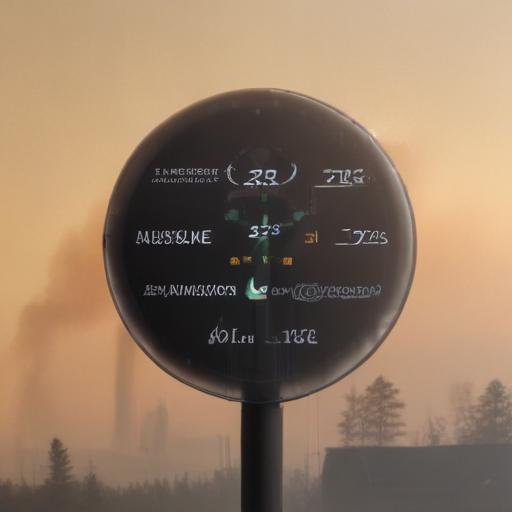Northern Michigan air quality alert as smoke from Canadian wildfires drifts south
Summary: The National Weather Service has issued a two-day air quality alert for Aug. 11-12 in northern Michigan as smoke from Canadian wildfires moves into the region. Forecasters say conditions may be unhealthy for sensitive groups and could become unhealthy for everyone at times, with potential changes later in the week.
The National Weather Service has issued an air quality alert covering multiple northern Michigan counties for Aug. 11 and Aug. 12 as smoke from wildfires burning in Canada drifts south into the state. Affected counties include Keweenaw, Ontonagon, Houghton, Baraga, Marquette, Alger, Luce, Gogebic, Iron, Dickinson, Menominee, Delta and Schoolcraft, with Mackinac Island and the Straits of Mackinac area also listed.
What to expect and what to do
– Air quality guidance: Fine particulate matter (PM2.5) levels are expected to rise, and air quality could be unhealthy for sensitive groups and may become unhealthy for everyone at times.
– Health recommendations: When possible, avoid strenuous outdoor activities, especially if you have heart disease or respiratory conditions such as asthma. Reduce outdoor burning and avoid using wood-burning devices indoors if possible. Keep windows closed overnight to limit smoke indoors, and consider using central air conditioning with a filter rated MERV-13 or higher.
– Watch for symptoms: Wheezing, coughing, chest tightness, dizziness, or burning sensations in the nose, throat or eyes may occur in some individuals.
Forecasts and how smoke may move
– Current wind patterns are expected to keep most of the smoke confined to Canada through the weekend. Meteorologists caution that a front moving through the Midwest early next week could sweep a larger plume of smoke into North Dakota and Minnesota, with a possibility of the Upper Peninsula seeing impacts on Tuesday. If this occurs, forecasters say it would likely be a short, one-day event.
Understanding Michigan’s air quality
– Aug. 10 conditions: Michigan’s air quality ranged from good to moderate across the state, with southeastern Michigan generally in the moderate range.
– PM2.5 explained: PM2.5 refers to fine particles 2.5 micrometers in diameter or smaller, which can come from smoke, dust or soot and can affect health, especially for sensitive groups.
Where to check conditions
– MiAir Quality Index Dashboard: The state’s EGLE dashboard provides current AQI scores for Michigan cities.
– AirNow: A nationwide resource to check local air quality by ZIP code or city.
– AccuWeather: Offers an AQI feature for current pollutants.
– EnviroFlash: The Michigan Department of Health and Human Services provides alert subscriptions via EnviroFlash.
Why this is happening
– Canadian wildfires: Canada reported ongoing active fires with many fires in Manitoba, Saskatchewan, and other eastern provinces. The current wildland fire season is well above the 10-year average in terms of area burned, contributing to the smoke that has reached northern Michigan.
Additional context for readers
– If you live in or travel through northern Michigan, plan outdoor activities accordingly on Aug. 11 and 12 and stay tuned for updated forecasts, especially if your location is near the eastern Upper Peninsula or inland areas where smoke can drift and concentrate.
– For those with respiratory conditions or heart disease, keeping a close eye on daily AQI updates and following medical guidance during higher pollution periods is advisable.
A hopeful note
– With weather patterns currently limiting widespread smoke intrusion, residents can reduce risk by following health recommendations and staying informed. Should the forecasted front bring a larger plume, air quality updates will help communities adjust plans quickly and protect vulnerable residents.
Commentary and analysis
– The spread of smoke from Canadian wildfires into the U.S. Midwest underscores the ongoing regional impact of wildfire seasons in North America. As conditions evolve, continued cooperation between federal, state and local agencies, along with public adherence to air quality advisories, will be key to safeguarding public health while the fire situation develops. Communities with air quality monitoring and alert systems in place can help residents respond promptly to changing conditions.
If you’d like, I can tailor this into a shorter summary suitable for a homepage teaser or expand it with a dedicated frequently asked questions section for readers.
